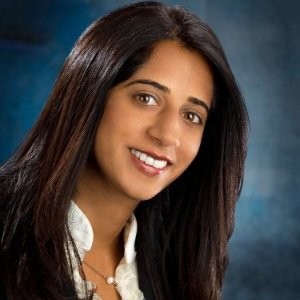Or listen in your favorite podcast app
Apple Podcasts / Google Podcasts / Stitcher
When Farah Papaioannou was first getting into the tech world, she was a bit apprehensive simply due to the fact that there were so many more men in the field than women. But she stuck to her path and in 2019 Farah was named the Edge Woman of the year for the work she has been doing as the Co-Founder and President at Edgeworx, Inc. On this episode, recorded live at Edge Computing World, where Farah accepted her honor, we dove into her journey and the innovative projects she’s been helping to build at Edgeworx.
Key Takeaways:
- Despite how far the industry has come, women still face unfair questions and discrimination
- The market is ripe for edge computing because more and more companies realize the need to be analyzing and acting on data in real-time
- Creating the edge infrastructure will be similar to how the cloud infrastructure was created — by putting many pieces together
Farah’s role in founding and working Edgeworx
She had been interested in edge computing for a while because while working at larger corporations, she saw how important it was to be able to use data to make decisions in real-time. She believed in the merits of edge computing so fully that she left her job to start the company — which was made even more complicated when she found out she was pregnant with her first child. Farah and her co-founder were faced with many struggles while getting their company off the ground — including investors questioning whether Farah’s pregnancy would impact the company — put the persevered and even closed a deal with their first customer on the day Farah gave birth.
One of Farah’s main interests is the go-to-market strategy, and so that is what she focuses on at Edgeworx. What Edgeworx offers is a product called Edgeworx Fabric, which allows companies to bring their cloud to the edge to create a seamless continuum for developers and analysts to work with. By computing at the edge, it allows for more bandwidth to be freed up and creates a more efficient and real-time work environment with a huge data set.
“I realized that people needed to make decisions off of data a lot faster than before and that was a competitive advantage. But 90% of the data was coming up from outside of the cloud and data center, which I saw in the big companies I was working with, so I started looking at edge computing pretty early.”
“I think the market is really ripe for edge computing. I think A.I. has been a huge push for why people are trying to get to the edge because people want to push algorithms down faster so they can take that data and make some sense out of it and more real-time.”
The state of the edge today
We are still in the early days of edge computing, and Farah says that most people are just now trying to figure out what their edge strategy is going to be moving forward or if they need it at all. But Farah knows that working at the edge does work and is currently a good option for many companies. And the technology will only keep getting better from here. It will take a lot of collaboration and many companies working on niche parts of the infrastructure, though.
“People are hanging back and trying to figure out an edge strategy, but I’m starting to see a movement now, um, where we aren’t seeing that maybe 12 months ago where people are like, take taking the plunge and want to figure out how do I build this to build it internally? How do I put the stack all together? Where does this piece fit in with this piece?”
“We all kind of need each other for all of us to grow and make this industry work. I don’t think one piece is going to solve the problem. And we’ve seen that with a lot of different industries. I think there was the same sort of confusion with cloud when it started. There was the same sort of confusion with big data when it started. And we finally got through that fog and now there’s a ton of players in both of those areas and instead of making the market, now the edge players just carving out little niches for themselves.”




